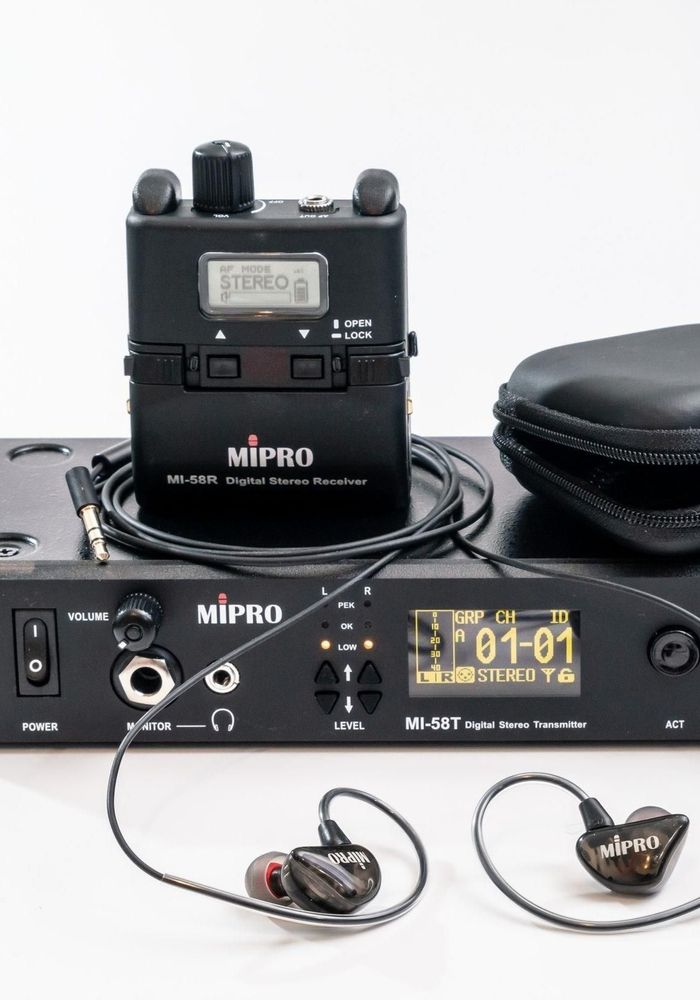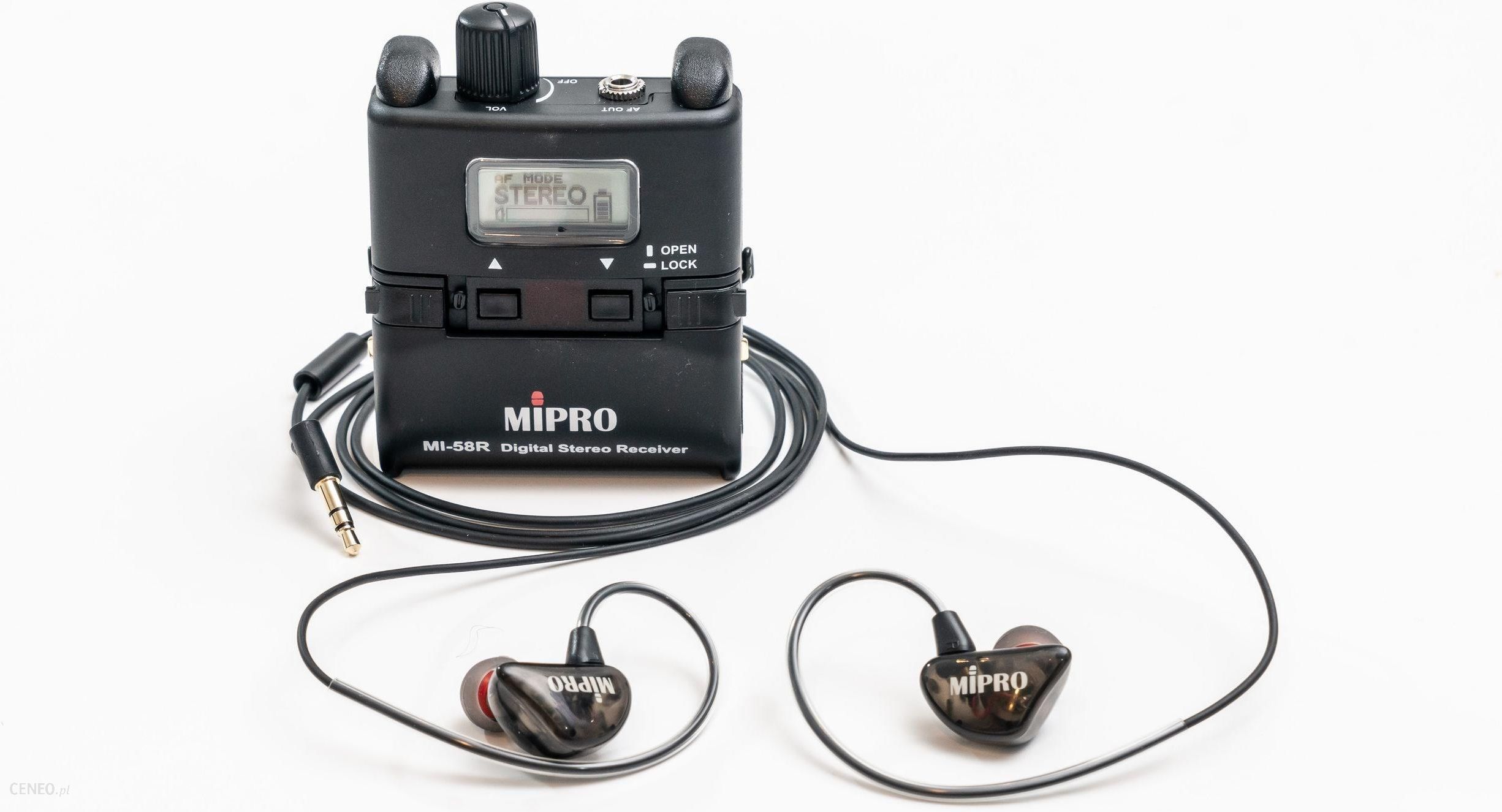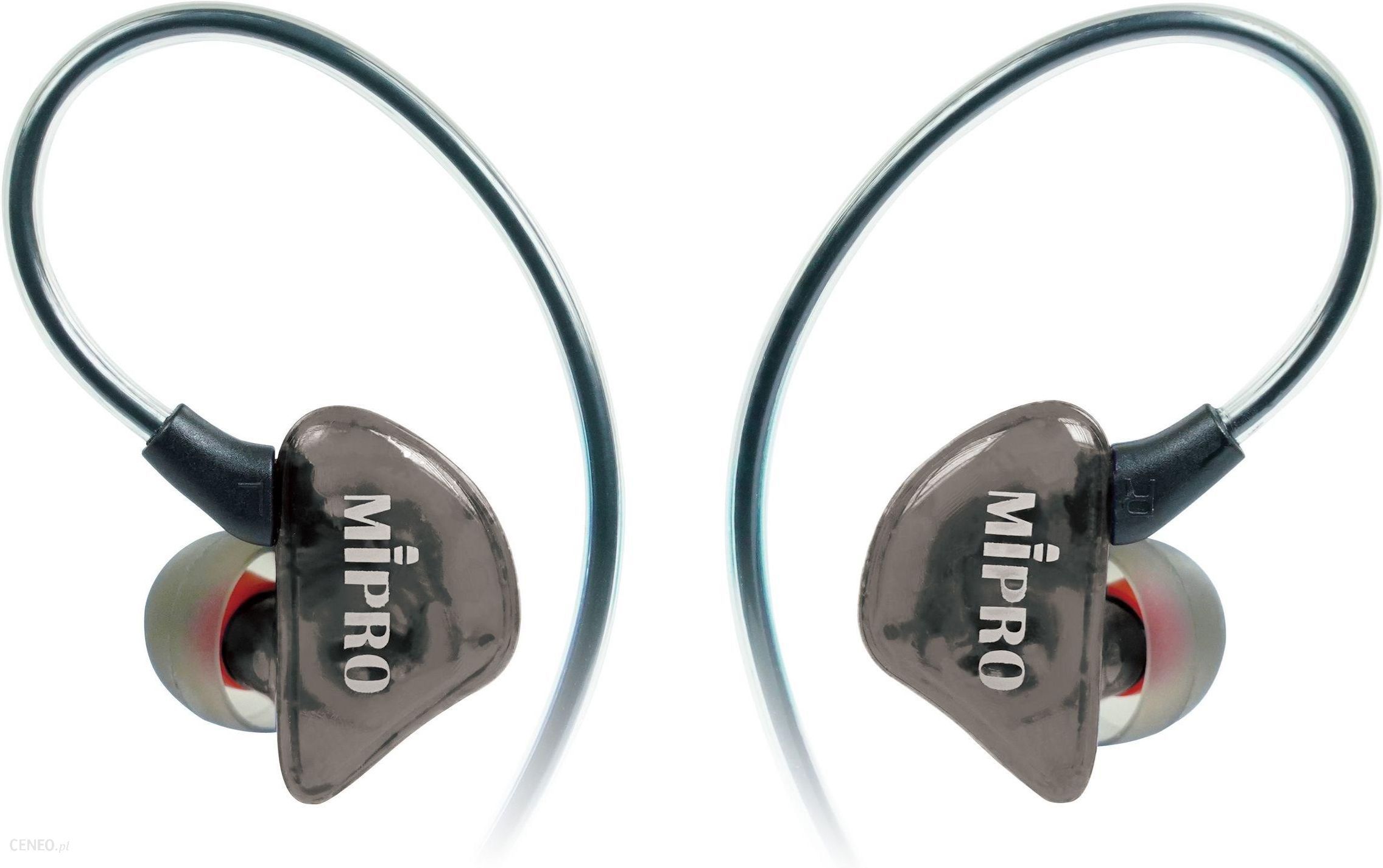Headliner recently got hold of MIPRO’s MI-58 Series to discover how useful this digital IEM system can be for personal and professional stage monitoring...
This was my first experience of a MIPRO radio device, other than a couple of the UHF version IEMs turning up at the side of a festival stage with some of the acts I worked with earlier in the summer. In all the haste, I only got a minute to work out how to alter the frequencies and check they were working before handing them to the relevant musicians. What I do know is that those that own MIPRO kit, swear by it!
Firstly, a little about the 5.8GHz (5725 - 5850 MHz band) which is a licence-free ISM (Industrial, Scientific and Medical) allocated band providing 150MHz of bandwidth. It’s one of the bandwidths your dual band WiFi router utilises; the one that while noted for having a more localised coverage area than the 2.4GHz, transmits data at faster speeds.
Within the 5.8GHz band there’s scope for multiple high speed channels and within each channel are locks for multiple streams. This means there should be more than enough capacity for running as many sets as you require for most band and theatre applications, with a total of 64 IDs across all MIPRO 5.8GHz kit.
Transmit
The system consists of the MI-58R body-pack and the MI-58T transmitter. The transmitter is a half-U that can be rack mounted or paired and rack mounted with optional kits. Inputs to the transmitter are by way of a pair of analogue balanced line-in XLR or TRS jacks, while there are also a pair of loop out TRS jacks to daisy chain further devices. For the digital purists, there’s a Dante option – the MI-58TD.





